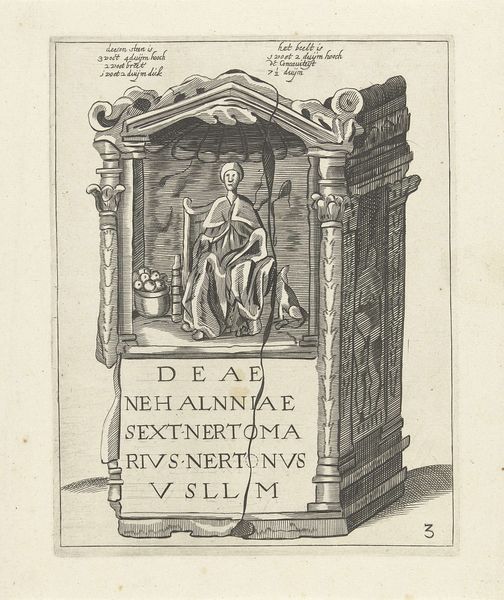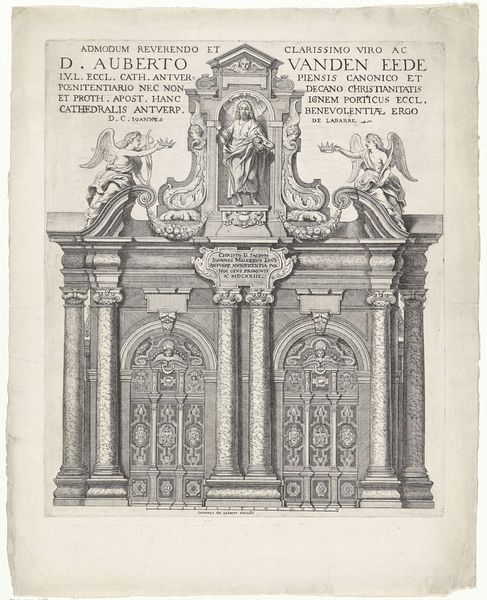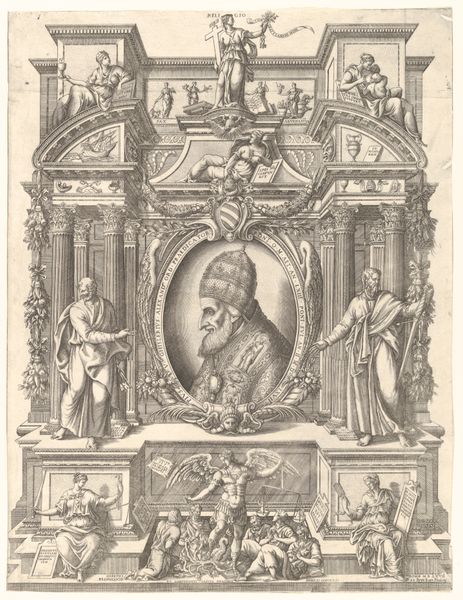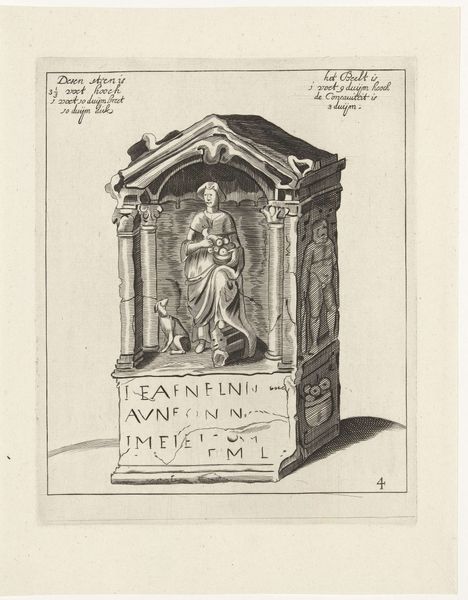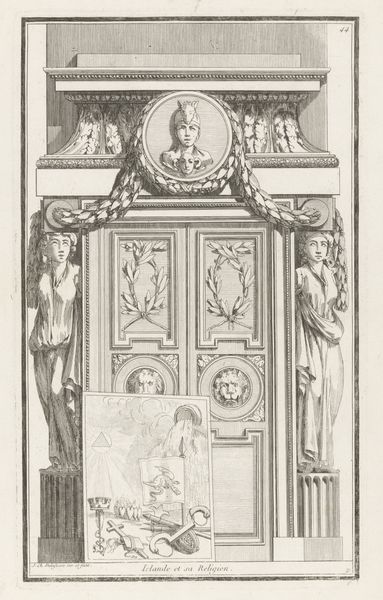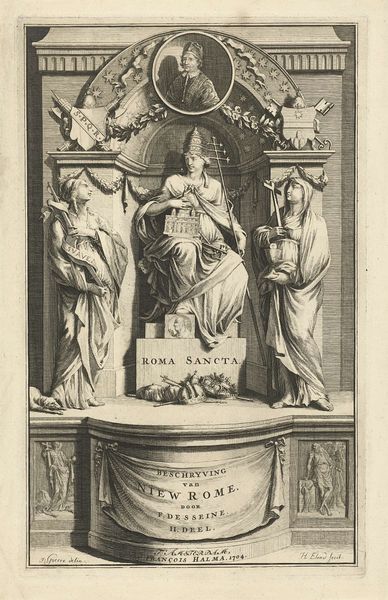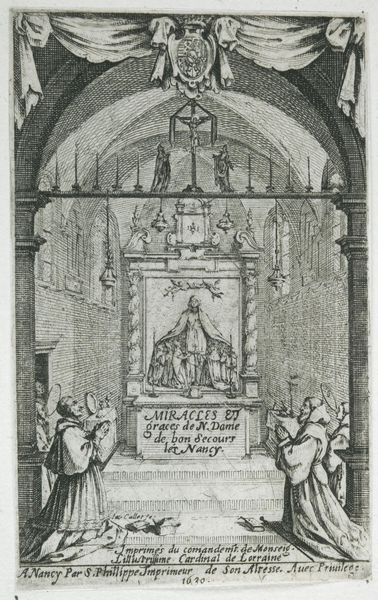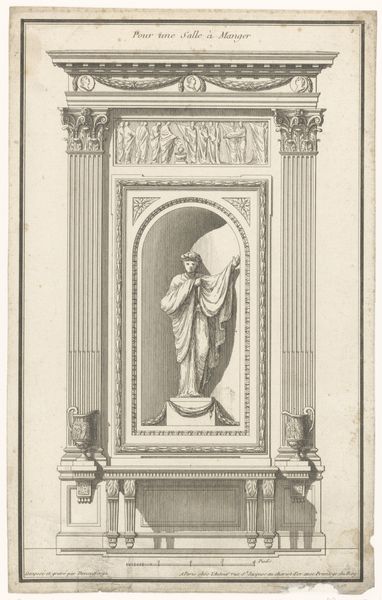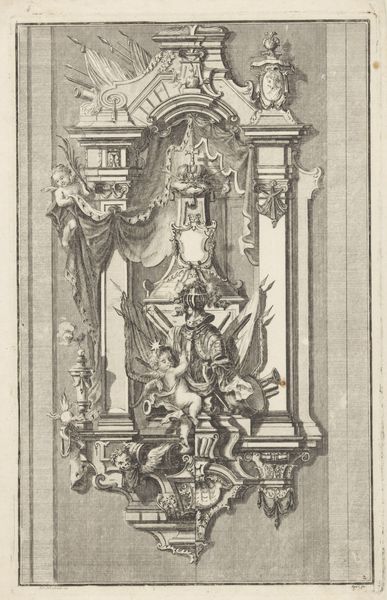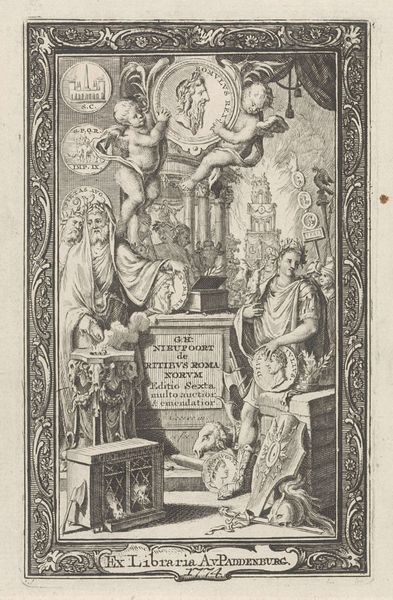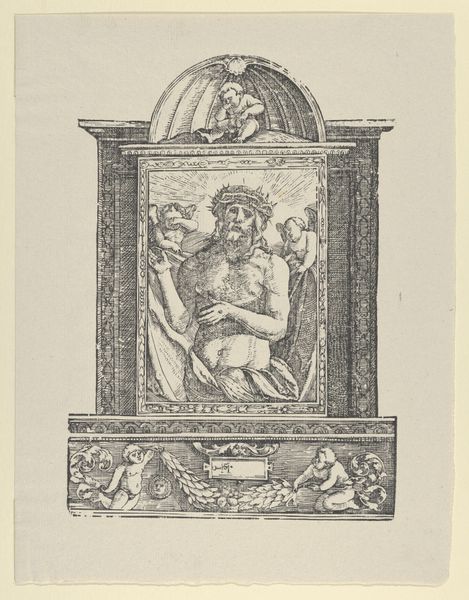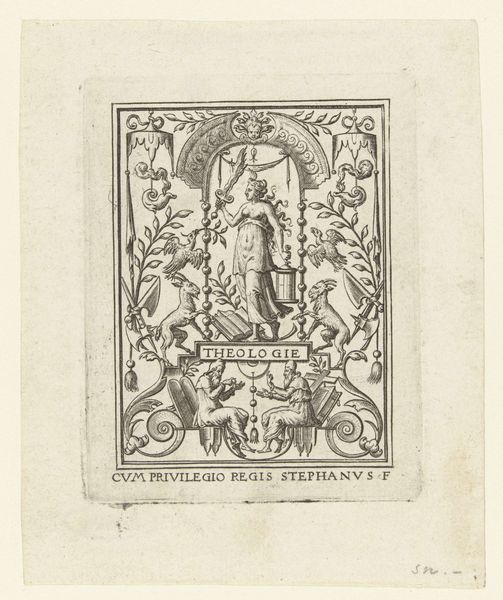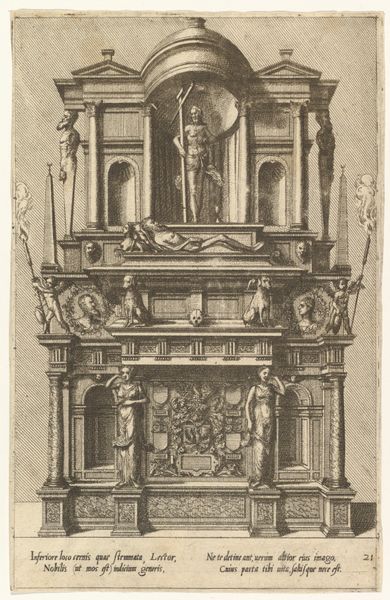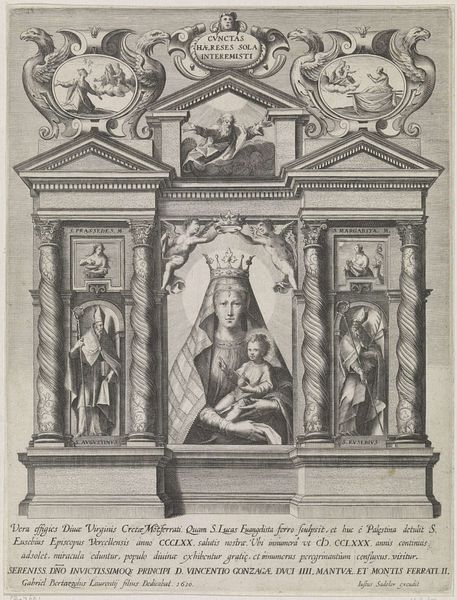
print, metal, relief, engraving
#
baroque
#
dutch-golden-age
# print
#
metal
#
relief
#
history-painting
#
engraving
Dimensions: height 209 mm, width 179 mm
Copyright: Rijks Museum: Open Domain
Curator: Let’s turn our attention to this engraving titled "Nehalennia-altaar" dating back to 1647, crafted in metal relief. What springs to mind when you see it? Editor: Immediately, I'm struck by the image's devotional aspect and almost funerary gravity. It feels like peering into a sacred space from a time long past. The way the figure is draped lends to the idea of an unveiled revelation, something being revealed after a long period, hence it projects an aura of quiet reverence. Curator: Interesting. Looking at it from a production standpoint, the meticulousness of the engraving on metal really highlights the labor and skill involved. It serves to remind us that the act of creating sacred images was very important, and one can gather information about cultural values, beliefs, and patronage systems just from looking at the resources allocated to it. Editor: Absolutely. And it also offers us clues to the iconography associated with Nehalennia. The altar form itself suggests a dedication to ritual, maybe associated with travel, commerce and trade; that figure with flowing drapery invites contemplation about symbolic movement or transformation as she seemingly shields something unseen. Curator: Focusing on the materials themselves – metal allows for durability and potentially mass production in the long run of printed media. Was this commissioned for a private individual? What level of craftsmanship and what would have its potential use have been in early modern Netherlandish society? What does its survival through time imply? Editor: Precisely, but the question still remains - did those original meanings endure or evolve over time and for different populations? How would you read such intricate symbology about ancient dieties against a rising tide of Protestant austerity, for instance? The answers will probably be very compelling… Curator: It highlights how materiality impacts access and value. Thanks for offering insights that emphasize not only craft itself but also how cultural memory shapes both its design and ongoing interpretation even to this day. Editor: Thank you! Looking carefully has certainly offered me a renewed understanding of images across time; each engraved line echoing forgotten faiths, and re-imaginings of ourselves when faced with profound questions of divinity.
Comments
No comments
Be the first to comment and join the conversation on the ultimate creative platform.
